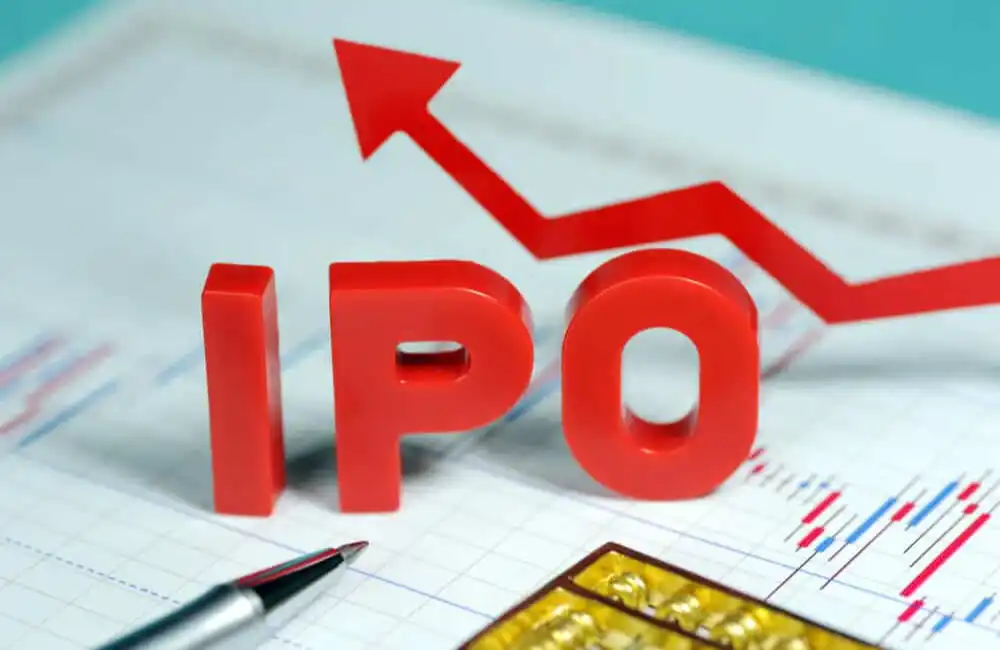Tether's $500 Billion Valuation: The Untold Stories of Secret Shareholders
Original Article Title: "The Untold Stories of Wealthy Shareholders Behind Tether's $5 Trillion Valuation"
Original Article Author: David, DeepTech TechFlow
On September 24, 2025, Bloomberg reported that Tether Holdings, the world's largest stablecoin issuer, is in talks with investors for a new round of funding, planning to sell a 3% stake to raise $150-200 billion.
If calculated at the upper limit, this transaction would bring Tether's valuation to around $5 trillion, making it one of the most valuable private companies in the world.
What does a $5 trillion valuation mean?
For comparison, as of March this year, OpenAI was valued at around $3 trillion, and SpaceX at around $4.5 trillion. Tether's target valuation of $5 trillion even exceeds the combined market capitalization of two Wall Street giants, Goldman Sachs at $2.16 trillion and Blackstone at $1.48 trillion.

However, what is truly striking is not the company's valuation itself, but the individuals behind this number.
Those who directly or indirectly hold Tether shares, if the deal goes through, may become the richest group of people in the history of the cryptocurrency industry.
As a privately held company registered in the British Virgin Islands, Tether has never voluntarily disclosed its ownership structure. This company, controlling a circulating supply of $170 billion USDT and almost monopolizing the global cryptocurrency trading infrastructure, has always kept its actual controllers in the shadows.
It wasn't until 2021 that the New York Attorney General's Office and the U.S. Commodity Futures Trading Commission (CFTC) investigation files unexpectedly exposed some ownership information; in 2024, the well-known U.S. media Forbes further supplemented this puzzle through multiple sources.
Based on these fragmented but relatively reliable pieces of information, we can finally sketch out the wealth map behind Tether.
Based on the $5 trillion valuation, the largest shareholder of Tether, a 61-year-old Italian, would possess over $2 trillion in wealth, surpassing Buffett to become the world's fifth richest person.
While several other core shareholders will also enter the billionaire or centi-billionaire club.
These long-time invisible super-rich individuals finally have specific names and faces. Among them are a former plastic surgeon, a programmer who codes until the early hours of the morning, a Dutchman who learned Chinese in Taiwan, and even a Chinese businessman currently serving a prison sentence.
Behind each person is a little-known story of wealth accumulation.

Chairman: From Plastic Surgeon to Top Five Global Billionaire
Giancarlo Devasini
Current Position: Tether Chairman, CFO
Ownership: 47%
Potential Net Worth: $235 Billion (Fifth wealthiest globally)

Giancarlo Devasini may be the most mysterious super billionaire in the crypto world.
This 61-year-old Italian rarely appears in public, has no social media presence, and very few public photos can be found. However, he controls 47% of Tether's shares.
According to the Bloomberg Billionaires Index calculations, if the $500 billion valuation becomes a reality, he would surpass Buffett to become the world's fifth richest, following Musk, Ellison (Oracle), Zuckerberg, and Bezos.
However, compared to the stability of wealth value, Devasini's life trajectory seems more erratic.
In 1990, Giancarlo Devasini graduated from the University of Milan Medical School and became a plastic surgeon. Two years later, he gave up this seemingly stable and respectable profession.
After leaving the hospital, Devasini entered the IT trading field, importing computer parts, and selling electronic products. He did whatever made money. In 1995, he was asked by Microsoft to pay a 1 million Lire settlement for selling pirated software.
In 2008, a fire destroyed his warehouse, leading to the bankruptcy liquidation of his company. At the time, Devasini was 44 years old and back to an almost destitute state.
But it was precisely this bankruptcy that pushed him into the world of crypto. In 2012, he invested in the then-obscure Bitfinex exchange and gradually took over its operation.
At that time, the crypto market's volatility was even more extreme than it is today. Devasini also keenly observed the issue: the price fluctuation of BTC and others was too high to serve as a payment tool.
In 2014, Devasini and the technical genius Paolo Ardoino introduced a solution: Tether, a stablecoin pegged 1:1 to the US dollar, but the process was far from smooth.
At that time, the market's acceptance of stablecoins was far lower than it is today. Concerns about stablecoin reserves, audits, and redemption were rampant. Devasini personally pioneered the way, flying to the Bahamas, Switzerland, Hong Kong, knocking on the doors of banks one by one, seeking financial institutions willing to open accounts for this "suspicious" project.
In 2016, Bitfinex was hacked, losing 120,000 bitcoins, and everyone thought the company was finished.
Devasini proposed a solution, issuing debt tokens BFX to compensate affected users, promising a buyback, while ensuring Tether continued to operate. The market accepted this seemingly unrealistic solution, and USDT instead began to skyrocket.
In 2018, Bitfinex had $850 million frozen by payment processor Crypto Capital, facing a liquidity crisis.
Devasini chose to directly call funds from Tether's reserves to provide emergency relief, a decision that caught the attention of the New York Attorney General, who believed it affected the integrity of USDT's dollar reserves.
After a two-year investigation, Tether reached a $18.5 million settlement but did not admit to any wrongdoing.
After several crises, Devasini's position became more stable. Public news and data show that his ownership stake increased from 43% in 2018 to 47% in 2024.
In March 2025, at the age of 61, he was promoted from CFO to Chairman, further consolidating his control.
Today, Devasini, 61, still maintains an extremely low profile. He has no social media presence, rarely gives media interviews, and has very few public photos. From 2017 to 2023, he was reportedly mainly based in Lugano, Switzerland, where Tether signed a memorandum of cooperation with the municipal government to promote cryptocurrency applications.
According to the New York Attorney General's 2021 investigative file, Devasini plays a key role in the operations of Tether and Bitfinex, including handling banking relationships and reserve management.
Over 15 years, Devasini went from being a doctor to a billionaire with a $200 billion fortune.
CEO: The Code-Writing Workhorse
Paolo Ardoino
Current Position: Tether CEO
Ownership: About 20%
Potential Net Worth: $100 billion

If Giancarlo Devasini is the mysterious brain behind Tether, Paolo Ardoino is the public face of the company.
One is always behind the scenes, the other is vocal on Twitter every day; one gains control through capital, the other exchanges code for shares.
In 2017, Ardoino made over 40,000 commits on GitHub, averaging over 100 a day. His almost obsessive work intensity defined the upward trajectory of this Italian programmer.

In 2014, he joined Bitfinex as a senior software developer, with his exact shareholding at the time unknown; by 2024, Forbes reported he held about 20% of Tether. If the $500 billion valuation materializes, it means a $100 billion fortune.
Ardoino's fate with Devasini began in London in 2014. According to CoinDesk, Devasini, who was running Bitfinex at the time, recognized Ardoino's technical capabilities.
From a regular developer to CEO, Ardoino's promotional path is very clear: promoted to CTO in 2017, took over as CEO in December 2023.
But even as CEO, he is still the person who works until the early hours of the morning. His Twitter account, @paoloardoino, is often seen replying to technical questions late at night. When the media questioned Tether, he would immediately counter, such as directly referring to The Wall Street Journal's critical article as a "clown article."

This frequent vocal style filled the information void left by Devasini's low profile. In a stablecoin business that requires trust, Ardoino became the visible person that users could turn to.
In addition to Tether, he also founded the peer-to-peer technology company Holepunch in 2022. Despite juggling multiple roles, he admitted that he has not taken a formal vacation in nearly a decade.
"I have never been to Japan," he mentioned in an interview. "That is the homeland of video games and anime, which I have always wanted to visit."
In April 2024, Forbes listed Ardoino on the global cryptocurrency billionaire list, valuing him at $3.9 billion. But if Tether reaches a valuation of $500 billion, that number will multiply by 25. By then, he will join the global centibillionaire club.
Former CEO: Taiwanese Son-in-law, Often Visits Temples for Blessings
Jean-Louis van der Velde
Current Position: Tether Advisor, Bitfinex CEO (Former Tether CEO)
Ownership: 10-15%
Potential Net Worth: $500-750 Billion

Within Tether's executive team, Jean-Louis van der Velde may be one of the most enigmatic figures.
This Dutchman's Asian story began in 1985. At that time, he left his hometown and came to National Taiwan Normal University to study Chinese. According to his LinkedIn profile, after graduating in 1988, he never returned to the Netherlands and instead settled in Asia.
Nearly 40 years later, this former Chinese language student may possess a fortune of several hundred billion dollars.
Van der Velde rose to prominence in the crypto world fairly quietly. In 2013, he became a co-founder and CEO of Bitfinex. According to the company's blog, his role at the time was to "build a holding structure, focusing on developing and investing in financial technology and big data-related technologies."
In simpler terms, he was responsible for building the company's framework and external relations.
Regulatory filings from 2018 indicated that he held around 15% of Tether. By 2024, his specific ownership percentage is no longer public, but Forbes still includes him in the cryptocurrency billionaire list, valuing him at $3.9 billion. If he still holds 10-15% of the shares, at a $500 billion valuation, his wealth would reach $50-75 billion.
Unlike Devasini's mystery and Ardoino's activity, Van der Velde chose a different form of presence: present but invisible.
He has a position, he has shares, but there is almost no public discourse. Search his name, and you'll find plenty of job-related information but very little personal information.
In October 2023, Van der Velde stepped down from the CEO position at Tether, passing the baton to Ardoino. However, he did not leave but transitioned to an advisory role while staying on as the CEO of Bitfinex.

Public information about his personal life is scarce. According to his LinkedIn profile, he is fluent in five languages: Dutch, English, Chinese, German, and French. Apart from that, the most widespread detail comes from a Taiwanese media report:
His wife is Taiwanese, thus deeply influenced by the local culture. Due to the hardships of the entrepreneurial process, he lights incense at a temple in northern Taiwan every year to pray for blessings. Even when he cannot attend in person, he arranges for someone to do it on his behalf.
This detail is hard to verify but does indeed align with his image.
A Westerner deeply influenced by Asian culture, low-key, pragmatic, gradually building a crypto empire in the commercial soil of the East.
Interestingly, some have even questioned whether Van der Velde truly exists. There have been instances where Twitter users jokingly asked, "Has anyone actually seen Bitfinex's CEO?" This is, of course, an exaggeration, but it also reflects his low-key nature.
Unlike most KOLs in the current noisy crypto ecosystem, the strong may not need to be high-profile, vocal, or even seen.
Of course, assuming you positioned yourself early enough in the right place.
Legal Advisor: Resignation, Mission Accomplished
Stuart Hoegner
Previous Position: Tether/Bitfinex General Counsel
Equity: 13%
Potential Net Worth: $650 Billion

In January 2025, Stuart Hoegner updated his Twitter bio from "General Counsel for Bitfinex and Tether" to "Former General Counsel."
Hoegner holds a unique identity in the crypto world: @bitcoinlawyer. This Twitter account has been active since 2011, three years before Tether's inception.
While most lawyers were still studying the legality of Bitcoin, he was already providing legal services to the industry.
In 2014, Hoegner joined Bitfinex, later becoming the General Counsel for Tether. In this role, he guarded the two companies for 11 years. According to regulatory filings in 2018, he held about 15% of Tether's equity. By 2024, Forbes reported this percentage had decreased to 13%.
As a lawyer, Hoegner's work often placed him in the eye of the storm. In 2019, when the New York Attorney General investigated Tether's $850 million fund issue, he led the legal team's response. In 2021, when the CFTC fined Tether $41 million over reserve issues, he was also responsible for negotiations.
However, unlike the typical corporate lawyer, Hoegner is exceptionally active on social media.
His Twitter not only discusses legal issues but also frequently retweets content supporting Bitcoin and refuting doubts about Tether. This combative stance has made him a prominent figure in the crypto community.
His background also has quite a story. Before entering the crypto industry, Hoegner worked in the online poker industry. In 2008, during his tenure at the Ultimate Bet poker site, the site was involved in a scandal where insiders were caught using a superuser account to cheat.
Interestingly, another lawyer involved in the Ultimate Bet incident, Daniel Friedberg, later became FTX's Chief Regulatory Officer and played a controversial role in FTX's collapse.

The two former colleagues took different paths in the crypto world.
One saw a company rise to a $500 billion valuation, while the other witnessed the downfall of the largest crypto empire in history.
Hoegner's retirement in January 2025 came at a delicate time. The EU's MiCA regulation had just come into effect, and stablecoin regulation in the US was accelerating.
As the legal chief, he understood better than anyone the upcoming regulatory challenges. Retirement may have been a timely exit from turbulent waters.
If he still held that 13% stake, being the "former legal counsel" might not hinder him from becoming the wealthiest lawyer in the crypto industry.
The Disappearing Fourth Mystery Shareholder
Christopher Harborne (UK) / Chakrit Sakunkrit (Thailand)
Ownership: 13% (2018 data)
Potential Net Worth: $650 billion

On Tether's shareholder list, there is one person more mysterious than Van der Velde, with even two names.
According to the 2021 investigation file from the New York Attorney General, in 2018, a businessman holding dual citizenship in the UK and Thailand owned around 13% of Tether. In the UK, he goes by Christopher Harborne; in Thailand, he is known as Chakrit Sakunkrit.
This is the only "outsider" in Tether's ownership structure. Neither part of the founding team nor an executive, yet holding a stake equivalent to the Chief Legal Officer.
Public information about Harborne/Sakunkrit is extremely limited. UK company registration records show that he has been involved in multiple fields, from aviation to tech investment. Information from Thailand is even scarcer, with only the knowledge that he conducts business under the name Chakrit Sakunkrit.
How he acquired Tether shares, when he invested, and the amount of the investment? These key questions all remain unanswered.
Even more puzzling is the fact that after 2018, this name completely vanished from all Tether-related documents and reports.
In Forbes' 2024 Crypto Billionaires List, the aforementioned Devasini, Ardoino, Van der Velde, and Hoegner are listed, but Harborne is conspicuously absent.
In the 2025 funding news, he is also nowhere to be found. With 13% ownership, if valued at $500 billion, it would be worth $65 billion. Assuming he still holds equity, he would evidently be Tether's most successful invisible investor.
In a company shrouded in secrecy, this individual may be the biggest mystery.
Wall Street Capital and US Secretary of Commerce
Institution: Cantor Fitzgerald
Investment Time: November 2024
Stake: 5%
Investment Amount: $6 billion
Potential Value: $25 billion
In November 2024, Wall Street financial services firm Cantor Fitzgerald acquired a 5% stake in Tether for $6 billion.
At that price, Tether was valued at only $120 billion. For comparison, competitor Circle had a market cap of around $300 billion, while Tether's USDT circulation was more than twice that of Circle's USDC.
Why was it so cheap? The answer may lie in timing and personal relationships.
The key figure in this transaction is Howard Lutnick, CEO of Cantor Fitzgerald. Shortly after the investment was completed in November 2024, Lutnick was appointed as the U.S. Secretary of Commerce in January 2025.

This timeline has added a special color to the transaction of acquiring Tether shares. Critics argue that this was a "friendly price" transaction, with Tether delivering benefits to Lutnick, who was about to enter the government, at a discounted valuation.
Even more interesting is the detail that, according to Fortune magazine, Lutnick's son Brandon Lutnick works at Cantor and had previously interned at Tether in Switzerland.
Regardless of the motive, in terms of investment return, this may be one of Cantor Fitzgerald's most successful deals in history. If Tether reaches a $500 billion valuation, the $600 million will turn into $250 billion, yielding over 40 times the return. Even if the valuation only reaches $250 billion, the return would still be 20 times.
Founded in 1945, Cantor Fitzgerald is a well-established Wall Street financial institution. Their investment is significant for Tether: it marks the first mainstream U.S. financial institution to become a Tether shareholder. In the context of increasing regulatory pressure, the endorsement value is hard to quantify.
Moreover, over the past three years, Cantor Fitzgerald has been providing custody services for the government bonds supporting the stablecoin issued by Tether, with these bonds accounting for over 80% of the $132 billion in assets backing the stablecoin.
According to The Wall Street Journal, the company has earned tens of millions of dollars in commissions for providing this service.
The more practical value may lie in Cantor's financial network. One of the biggest challenges Tether has faced in the long term is banking relationships. As a regulated financial institution in the U.S., Cantor's involvement may open up new banking channels for Tether.
From another perspective, Cantor's investment represents a shift in Wall Street's attitude towards cryptocurrency. No longer just observing or providing services, but directly becoming a shareholder to share in the growth dividends.
Howard Lutnick has a dual role, as CEO during the investment and now as Secretary of Commerce.
Regardless of whether this has affected the transaction price, what can be determined is that Tether now has an indirect connection to the highest levels of the U.S. government.
A Passive Tycoon Behind Bars
Zhao Dong
Identity: Bitfinex Shareholder, RenrenBit Founder
Shareholding: Bitfinex <5%
Potential Wealth: Billions of dollars, indirectly benefiting through the iFinex structure

Zhao Dong may be one of the most dramatic figures in the Tether enrichment story.
In August 2016, Bitfinex suffered a hack, losing 120,000 bitcoins. In this crisis, this Chinese Bitcoin whale became an unexpected protagonist.
To address the losses, Bitfinex proposed a compensation plan and issued BFX tokens to affected users, with each token representing a $1 loss. At the time, Zhao Dong was one of the affected users, but instead of opting to exit with a loss, he accepted Bitfinex's debt-to-equity swap offer.
He acquired more tokens from other users and ultimately converted all these tokens into iFinex equity. This decision transformed him from a victim into a shareholder of Bitfinex.
In April 2017, Bitfinex completed the redemption of all BFX tokens, and users who chose the debt-to-equity swap became permanent shareholders of the exchange. With the rapid growth of Bitfinex and its affiliated company Tether, the value of these early equity stakes has multiplied many times over.
According to public reports, Bitfinex CTO Paolo Ardoino once stated that Zhao Dong's shareholding in Bitfinex is less than 5%.
Although the percentage is not high, considering Bitfinex and Tether are both under iFinex, sharing management and ownership structure, the value of this equity stake may far exceed the surface figure.
Zhao Dong holds a unique and sensitive position in the domestic crypto circle.
He is a co-founder of Moji Weather and successfully cashed out in 2012. In 2013, he entered the Bitcoin world and reportedly held 10,000 Bitcoins at the peak. He founded the OTC trading platform RenrenBit, which was once one of the largest over-the-counter traders in China.
More importantly, he is the unofficial "spokesperson" for Tether in China.
In January 2018, Zhao Dong posted on Weibo that he saw a bank account balance of over $3 billion while meeting with Tether's CFO Giancarlo in Tokyo. As a prominent figure in the crypto community, his statement drew widespread attention.

In June 2020, everything came to a sudden halt.
According to multiple media reports, Zhao Dong was taken away by the police on charges related to money laundering and illegal business operations. In 2021, there were reports that he had been sentenced to several years in prison. The specific details of the case were never made public, but it is widely believed in the industry that it was related to his OTC business.
Ironically, the years Zhao Dong spent in prison coincided with the most frenzied period of the cryptocurrency market.
From 2020 to 2024, Bitcoin surged from $10,000 to over $70,000, and USDT's circulation increased from $10 billion to $170 billion. If he still had his Bitfinex shares, their value might have increased many times over.
If Zhao Dong's Bitfinex shares were not disposed of, through iFinex's structure, he might indirectly benefit from Tether's valuation growth. Even with less than 5% indirect ownership, at a $500 billion valuation, it would mean wealth of several billion dollars.
But all of this is hypothetical. His "passive position" seems more like fate making choices for him.
Finally, if Tether's funding round is completed, it will be the largest wealth creation in the history of the crypto industry.
Less than 10 people control the vast majority of the $170 billion stablecoin empire. Among them, Giancarlo Devasini alone holds 47%; the other key figures, most of whom are not even in the crypto industry's spotlight.
Perhaps this is the wealth code of the crypto era:
It's not about decentralization but about being in the right place at the right time in a low-key manner.
Welcome to join the official BlockBeats community:
Telegram Subscription Group: https://t.me/theblockbeats
Telegram Discussion Group: https://t.me/BlockBeats_App
Official Twitter Account: https://twitter.com/BlockBeatsAsia


 Forum
Forum Finance
Finance
 Specials
Specials
 On-chain Eco
On-chain Eco
 Entry
Entry
 Podcasts
Podcasts
 Activities
Activities









 0
0